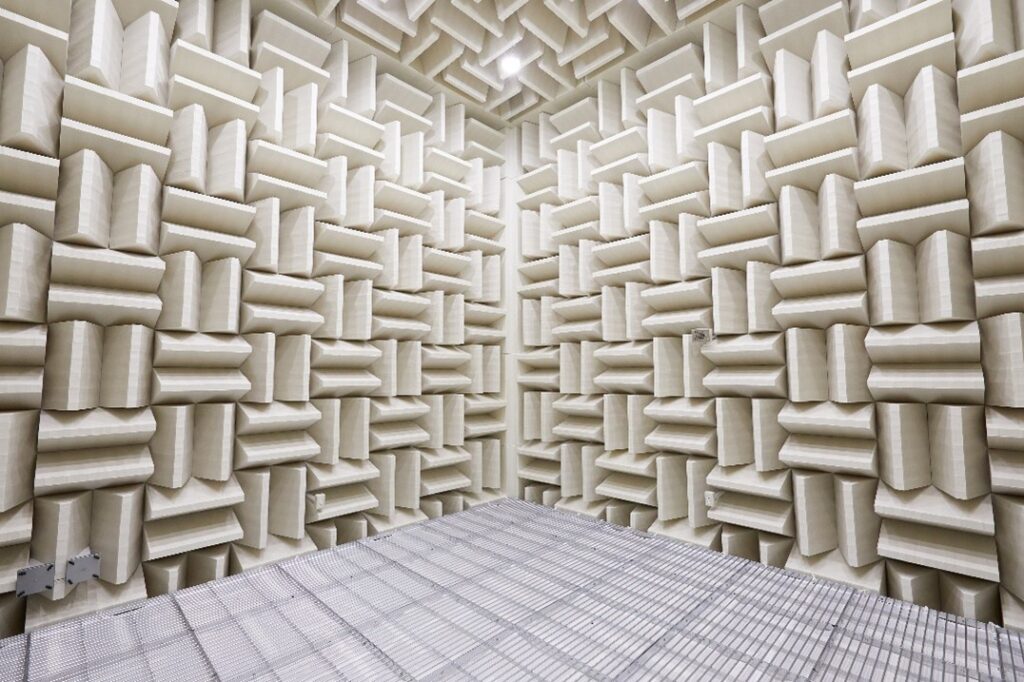Transforming Electronic Device Evaluation with Ultra-Low Background Noise Environments

Transforming Electronic Device Evaluation with Ultra-Low Background Noise Environments
– Next-generation testing environments enabled by Enclosure’s anechoic technology –
In today’s electronic product development, acoustic performance and high-frequency noise control are not just technical requirements—they directly impact brand value.
As a result, the role of anechoic chambers in product evaluation is becoming increasingly vital.
Especially in environments where background noise (ambient acoustic noise) is extremely low, even the faintest sounds can be detected with precision—an essential condition for high-accuracy measurements.
The advanced anechoic environments offered by Enclosure provide the ideal solution to meet the stringent demands of modern industries.
Why Is Background Noise Level So Important?
Background noise refers to all ambient sound present when the device under test is not operating. If this noise level is too high, even slight sounds produced by the product—such as cooling fan operation or high-frequency coil whine—cannot be accurately detected.
Examples include:
- Evaluating silent design in notebook PCs or compact cooling fans
- Testing noise countermeasures in power electronics
- S/N ratio testing of MEMS microphones and ultrasonic sensors
In such measurements, if the background noise level of the room is not lower than the product’s own noise level, accurate evaluation is simply not possible.
Anechoic Chambers Based on International Standards (ISO 3745/3744)
In addition to minimizing background noise, it’s also critical to establish the “inverse square law”—the principle that sound pressure level decreases by 6 dB every time the distance from the sound source doubles. This confirms whether the chamber functions as a true free-field environment.
Enclosure’s chamber designs comply with ISO 3745 and 3744 standards, achieving the following K2 correction criteria:
| Standard | Permissible K2 Environmental Correction |
|---|---|
| ISO 3745 | ≦ 0.5 dB |
| ISO 3744 | ≦ 4.0 dB |
Key Features of Enclosure’s Anechoic Environment
- High-performance sound-absorbing structure (non-glass wool)
Achieves consistent high absorption (α ≧ 0.99) with safe materials that resist dust and degradation - Optimized vibration damping and sound insulation
Minimizes background noise to industry-leading levels - Quiet HVAC and cable routing design
Equipped with low-noise air conditioning that does not interfere with measurement
Tangible Benefits of Implementation
| Before Implementation | After Implementation |
|---|---|
| Measurement limit ≧ 30 dB(A) | Measurement limit ≦ 15 dB(A) |
| Unstable measurement reproducibility | Reliable quantitative evaluation possible |
| K2 measurements required for each test | Stable conditions eliminate need for repeated K2 measurements |
From Precision Testing to Brand Trust
“Making sound visible” through reliable acoustic measurements is essential for both product evaluation and enhancing user-perceived quality.
Enclosure’s anechoic solutions enable ultra-low noise and accurate K2 correction, supporting both engineering and marketing efforts to boost product value.
